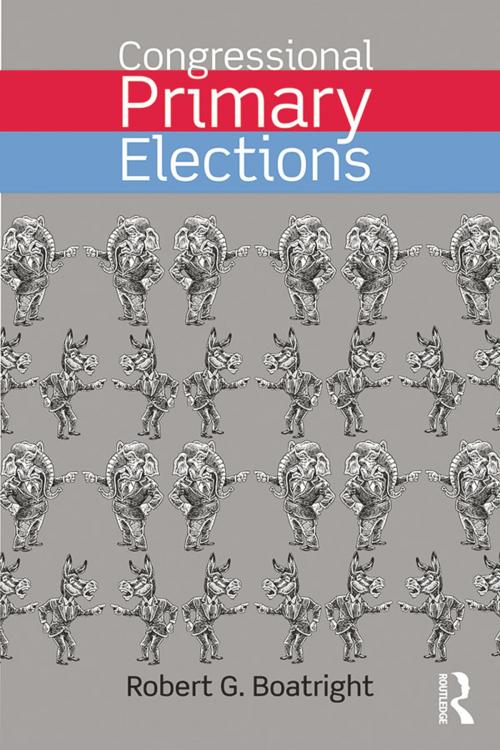Congressional Primary Elections
Nonfiction, Social & Cultural Studies, Political Science, Government, Elections| Author: | Robert G. Boatright | ISBN: | 9781317806004 |
| Publisher: | Taylor and Francis | Publication: | August 21, 2014 |
| Imprint: | Routledge | Language: | English |
| Author: | Robert G. Boatright |
| ISBN: | 9781317806004 |
| Publisher: | Taylor and Francis |
| Publication: | August 21, 2014 |
| Imprint: | Routledge |
| Language: | English |
Congressional primaries are increasingly being blamed for polarization and gridlock in Congress. Most American states adopted congressional primaries during the first decades of the 20th century as a means of breaking the hold of political "bosses" on the nomination of candidates. Yet now, many contend that primaries have become a means by which the most dedicated party activists choose candidates unrepresentative of the electorate, and so general election voters are forced to choose between two ideologically extreme candidates. Consequently, there have been recent instances in both parties where nominees were chosen who were clearly not preferred by party leaders, and who arguably lost elections that their parties should have won.
This book is the first to focus solely upon congressional primary elections, and to do so for a student readership. Boatright organizes his text around the contention that there are important differences between types of primaries, and these differences prevent us from making blanket statements about primary competition. He focuses on explanations of two sources of difference: differences in electoral structure and differences brought about by the presence or absence of an incumbent seeking reelection. The first three chapters introduce these differences, explore how they came to exist, and outline some of the strategic considerations for candidates, parties, interest groups, and voters in primary elections. The subsequent four chapters explore different types of primary elections, and the final chapter evaluates actual and proposed primary reforms.
Congressional Primary Elections is the first book to provide a history and analysis of congressional primary elections and will serve as a crucial part of courses on political parties and campaigns and elections. The book gives students the tools for understanding arguments for and against the reform of primary elections and for understanding the differences between types of primaries.
Congressional primaries are increasingly being blamed for polarization and gridlock in Congress. Most American states adopted congressional primaries during the first decades of the 20th century as a means of breaking the hold of political "bosses" on the nomination of candidates. Yet now, many contend that primaries have become a means by which the most dedicated party activists choose candidates unrepresentative of the electorate, and so general election voters are forced to choose between two ideologically extreme candidates. Consequently, there have been recent instances in both parties where nominees were chosen who were clearly not preferred by party leaders, and who arguably lost elections that their parties should have won.
This book is the first to focus solely upon congressional primary elections, and to do so for a student readership. Boatright organizes his text around the contention that there are important differences between types of primaries, and these differences prevent us from making blanket statements about primary competition. He focuses on explanations of two sources of difference: differences in electoral structure and differences brought about by the presence or absence of an incumbent seeking reelection. The first three chapters introduce these differences, explore how they came to exist, and outline some of the strategic considerations for candidates, parties, interest groups, and voters in primary elections. The subsequent four chapters explore different types of primary elections, and the final chapter evaluates actual and proposed primary reforms.
Congressional Primary Elections is the first book to provide a history and analysis of congressional primary elections and will serve as a crucial part of courses on political parties and campaigns and elections. The book gives students the tools for understanding arguments for and against the reform of primary elections and for understanding the differences between types of primaries.















